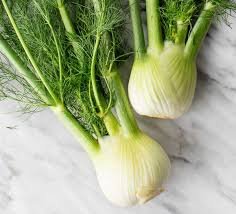Pasta is the ultimate love language of carbs. Whether you’re drowning your sorrows in a bowl of spaghetti or celebrating life with a plate of fettuccine Alfredo, pasta is always there for you. But what if we told you that your beloved Italian staple could be even better? Enter whole-wheat pasta: the healthier, nuttier, and slightly more virtuous cousin of regular pasta. It’s like your favorite comfort food decided to hit the gym but still know how to party.
Now, before you start picturing dry, cardboard-like noodles, let us assure you—homemade whole-wheat pasta is a game-changer. With the right technique, you get all the chewy, al dente goodness of traditional pasta, plus extra fiber and nutrients (so you can technically call it a healthy food). Whether you’re a pasta-making newbie or a seasoned dough kneader, this recipe will guide you through crafting the perfect whole-wheat pasta from scratch. Spoiler alert: it’s easier than resisting a second helping of garlic bread.
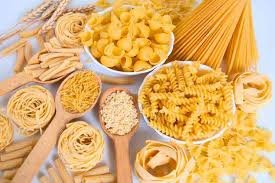
Why Choose Whole-Wheat Pasta? The Healthier (But Still Delicious) Choice
Let’s be real—pasta is life. But what if we told you there’s a version that’s not only delicious but also packed with nutritional benefits? Whole-wheat pasta is like the superhero of the noodle world—it may not wear a cape, but it’s here to save your meal with extra fiber, vitamins, and a nutty flavor that’ll make your taste buds do a happy dance.
1. Higher in Fiber – Goodbye, Mid-Meal Slump
Unlike refined pasta, which strips away the bran and germ (aka the good stuff), whole-wheat pasta keeps all parts of the grain intact. This means it’s loaded with fiber—about 3-4 times more than regular pasta. Why does that matter? Fiber keeps you fuller longer, helps digestion, and prevents that dreaded 3 p.m. carb crash. Translation: you can enjoy your pasta without needing a nap afterward.
2. Packed with Nutrients – A Multivitamin in Noodle Form
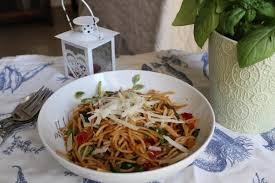
Whole-wheat pasta isn’t just empty carbs—it’s a nutritional powerhouse. It’s rich in:
- B vitamins (like folate and niacin) for energy
- Iron to keep your blood happy
- Magnesium for muscle and nerve function
- Antioxidants to fight inflammation
It’s like eating pasta with a side of vitamins.
3. Lower Glycemic Index – Bye-Bye, Blood Sugar Spikes
Refined pasta can send your blood sugar on a rollercoaster ride (up, up, up… and then crash). Whole-wheat pasta, on the other hand, has a lower glycemic index, meaning it digests more slowly and provides steady energy. This makes it a better choice for anyone watching their blood sugar—including diabetics or those just trying to avoid the dreaded “hangry” mode.
4. Nutty, Earthy Flavor – Because Bland Pasta is a Crime
Whole-wheat pasta has a deeper, slightly nutty taste that adds a whole new dimension to your dishes. It pairs perfectly with bold sauces—think garlicky pesto, hearty ragù, or even a simple olive oil and herb toss. If you’ve ever thought whole-wheat pasta tastes like cardboard, you’ve been eating the wrong kind. Freshly made or well-cooked, it’s a flavor upgrade.
5. Heart-Healthy & Weight-Friendly
Studies show that whole grains can help reduce the risk of heart disease, lower cholesterol, and even aid in weight management. So, while you’re twirling that forkful of whole-wheat spaghetti, you can also pat yourself on the back for making a heart-smart choice.
But Wait… Is Whole-Wheat Pasta Tough or Chewy?
Okay, we’ll admit—whole-wheat pasta can be denser than its refined cousin if not made or cooked properly. But here’s the secret:
- If buying dried, look for high-quality brands (like De Cecco or Barilla’s whole-wheat line).
- If making fresh, knead well and let the dough rest for a tender bite.
- Don’t overcook it! Aim for al dente to avoid mushiness.
Bottom Line: Whole-Wheat Pasta Wins
It’s nutritious, delicious, and keeps you satisfied longer. Whether you’re health-conscious or just a pasta lover looking to mix things up, whole-wheat pasta is a win-win. And hey, if you still want regular pasta sometimes? No judgment—balance is key. But once you try a well-made whole-wheat noodle, you might just become a convert.
Ingredients for Homemade Whole Wheat Pasta
Basic Whole Wheat Pasta Dough
(Serves 4-6)
- 2 cups (250g) whole wheat flour (preferably fine-ground for a smoother texture)
- 2 large eggs (room temperature)
- 1-2 tbsp water or olive oil (as needed for binding)
- ½ tsp salt (optional, enhances flavor)
Optional Additions for Enhanced Flavor
- 1 tbsp semolina flour (for texture)
- 1 tsp olive oil (for elasticity)
- Herbs & Spices (e.g., dried oregano, basil, or black pepper)
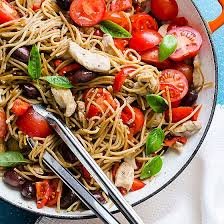
Step-by-Step Instructions
Step 1: Prepare the Dough
- Mound the Flour – On a clean counter or in a large mixing bowl, create a mound with the whole wheat flour. Make a well in the center.
- Add Eggs & Seasoning – Crack the eggs into the well. Add salt and olive oil (if using).
- Mix Gradually – Using a fork, whisk the eggs while slowly incorporating flour from the edges.
- Knead the Dough – Once combined, use your hands to knead for 8-10 minutes until smooth and elastic. If too dry, add water (1 tsp at a time). If sticky, dust with flour.
- Rest the Dough – Wrap in plastic or a damp cloth and let rest for 30 minutes. This relaxes the gluten, making rolling easier.
Step 2: Roll and Shape the Pasta
- Divide the Dough – Cut into 4 equal parts. Work with one piece at a time, keeping others covered.
- Rolling Options:
- By Hand: Use a rolling pin to flatten the dough into thin sheets (about 1/8 inch thick).
- Pasta Machine: Start at the widest setting, gradually thinning the dough (pass through each setting twice).
- Cut into Desired Shape:
- Fettuccine or Tagliatelle – Fold the sheet and slice into strips (¼ to ½ inch wide).
- Pappardelle – Wider ribbons (about 1 inch).
- Farfalle (Bow Ties) – Cut rectangles and pinch centers.
Step 3: Cook the Pasta
- Boil Water – Use a large pot with plenty of salted water (like the sea).
- Cook Fresh Pasta – Whole wheat pasta cooks faster (2-4 minutes). Taste for al dente texture.
- Reserve Pasta Water – Save ½ cup before draining (helps thicken sauces).
Serving Suggestions
Whole-wheat pasta pairs beautifully with robust sauces and fresh ingredients. Here are some classic Italian pairings:
1. Aglio e Olio (Garlic & Oil)
- Sauté minced garlic, chili flakes, and parsley in olive oil. Toss with pasta and a splash of pasta water.
2. Pesto Genovese
- Blend fresh basil, pine nuts, garlic, Parmesan, and olive oil. Mix with pasta and cherry tomatoes.
3. Mushroom & Spinach Cream Sauce
- Sauté mushrooms, garlic, and spinach. Add cream, Parmesan, and a pinch of nutmeg.
4. Classic Tomato Basil Sauce
- Simmer crushed tomatoes, garlic, basil, and olive oil. Toss with pasta and fresh mozzarella.
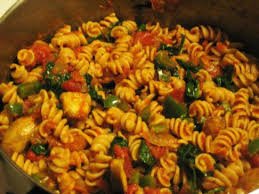
Tips for Perfect Whole-Wheat Pasta
- Use Fine-Ground Flour – ensures a smoother texture.
- Don’t overwork the Dough – it can make pasta tough.
- Adjust Hydration – Whole wheat absorbs more liquid; add water if needed.
- Experiment with Ratios – Mix 50% whole wheat and 50% all-purpose flour for a lighter texture.
FAQs About Whole Wheat Pasta
1. Is whole-wheat pasta healthier than regular pasta?
Yes! Whole-wheat pasta retains the bran and germ, meaning it’s packed with fiber, vitamins, and minerals. It digests slower, keeping you fuller longer and helping to stabilize blood sugar levels. Think of it as the marathon runner of pastas—steady, strong, and in it for the long haul.
2. Why is my whole-wheat pasta dough too dry or crumbly?
Whole wheat flour absorbs more liquid than refined flour. If your dough feels dry, add water or olive oil (1 tsp at a time) while kneading. If it’s sticky, dust it with a little extra flour. It’s all about finding that Goldilocks texture—just right.
3. Can I mix whole wheat and all-purpose flour for a lighter texture?
Absolutely! A 50-50 blend gives you the best of both worlds—the nutty flavor of whole wheat with the smoother texture of white flour. It’s like giving your pasta a spa day.
4. How do I prevent whole-wheat pasta from tasting bitter?
Some whole wheat flour can have a slightly bitter edge. Add a pinch of salt to the dough or pair it with bold sauces (like garlicky pesto or rich tomato ragù) to balance it. A squeeze of lemon at the end can also brighten the flavor.
5. Can I freeze homemade whole-wheat pasta?
Yes! After shaping, lay the pasta flat on a tray and freeze until solid, then transfer to a sealed bag. Cook straight from frozen—just add an extra minute or two to the boiling time. In the future, you will thank the past for this genius move.
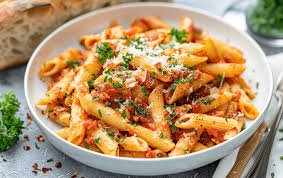
Conclusion
So there you have it—whole-wheat pasta that’s not just good for you but tastes good, too. Who knew eating healthy could be this delicious? Whether you smother it in rich sauces or keep it simple with olive oil and herbs, this pasta proves that you don’t have to sacrifice flavor for nutrition. Plus, making it from scratch means you get bragging rights—because nothing impresses dinner guests like saying, “Oh, this? Just some homemade pasta I whipped up.”
Now go forth and twirl those noodles with pride! And if anyone questions your culinary skills, just remind them that even Italians would approve. After all, life’s too short for bland food—especially when you can have a bowl of hearty, wholesome, homemade whole-wheat pasta instead. Buon Appetito!




